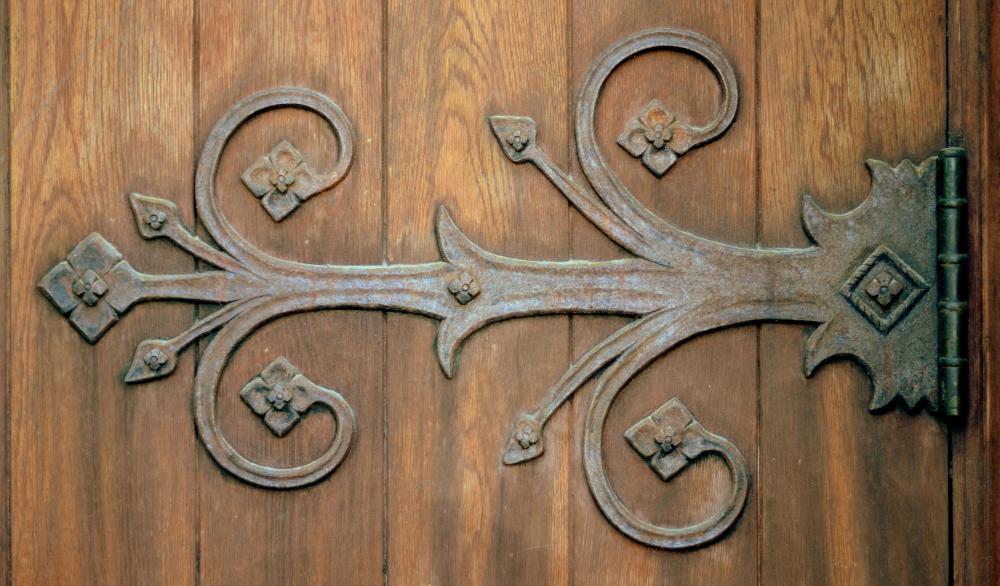At HomeQuestionsAnswered, we're committed to delivering accurate, trustworthy information. Our expert-authored content is rigorously fact-checked and sourced from credible authorities. Discover how we uphold the highest standards in providing you with reliable knowledge.
What are the Different Types of Cabinet Hinges?
There are two kinds of cabinets, framed and unframed, therefore there are two general categories of hinges. Framed cabinets have a visible front frame in the same plane as the doors so that all or part of the hinge might show. Cabinets without a frame are entirely enclosed by the door, and cannot have visible hinges.
Standard cabinet hinges only have four parts. The door wing is the side which screws into the door, while the frame wing attaches to the frame or the cabinet box itself. The circular knuckle connects the two wings with an interlocking pattern. The pin rests inside the knuckle, allowing it to rotate.

Cabinet hinges can further be categorized by various means. They are identified by considering which parts are visible when the cabinet is closed, and by how the door meets the frame. For instance, some doors lay on top of the frame, some are inset with a rabbet, and some are flush to the frame. This affects how the hinge wraps around the edge.
The most common, old-fashioned cabinet hinges are full inset, otherwise known as flush or butt, hinges. When the frame and door are the same thickness and completely flush, these hinges fit in between them, leaving only the knuckle visible. Another simple, familiar hinge is the surface mount variety, where both wings are mounted on the exterior of the door and frame. Because this is entirely visible, these cabinet hinges are often decorative, with shaped wings, hand-hammered textures, or specialty finishes.

For cabinets that have overlapping doors, there are three wrap-around hinges to choose from: inset, reverse bevel, or overlay. If the door fits into the frame with a lip, an inset hinge is needed so the door wing extends into the lip of the frame. If the door overlaps the frame with a beveled, or slanted, edge, it is an offset cabinet, and requires a reverse bevel hinge that accounts for the diagonal. If the door overlaps the frame with a straight edge, the proper hinge is named overlay. In all cases, the frame wing is visible but the hidden door wing screws onto the inside of the door.
Finally, unframed cabinets use "European" hinges. This means the hinge, including the knuckle, is entirely concealed. Often, these fancy frameless cabinet hinges are self-closing. When the door is left slightly ajar, the hinge uses tension to gently pull it shut.
AS FEATURED ON:
AS FEATURED ON:












Discussion Comments
can a framed cabinet have a concealed hinge? I need to find a concealed hinges with a 1" overlay for a framed cabinet. Now!
Please help with information.
1. Can a cabinet door with a snap close hinge stay opened or will it always want to close with some force? Is it hard to pull open without a door knob? 2. Does a soft close hinge need some force to pull open? Thank you.
I have used Belwith p5129-14 hinges from Lowes to replace grass 830 hinges. They work great!
Need some parts for Grass cabinet hinges. The house was built in '94 and the manufacturer may not have the exact hinge available. The closest thing is a model 830. The 1/2" roll pins with rounded ends break, causing the door to not self-close. Could I get by with finding something like these in a hardware store as a generic part? Help!
Post your comments